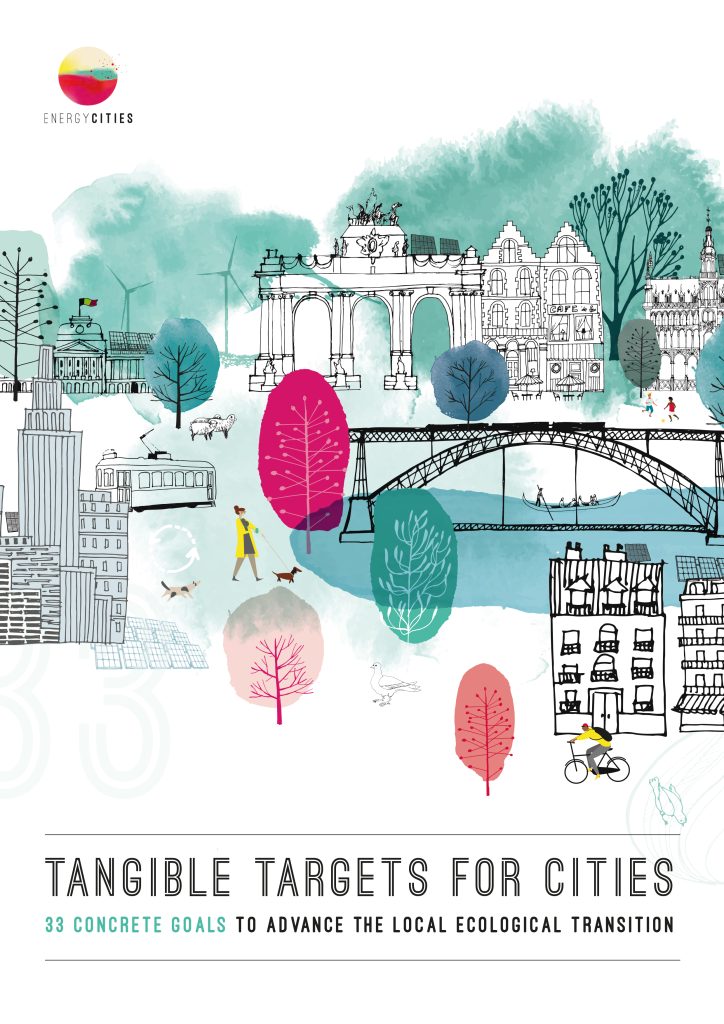One community energy project per 500 inhabitants…
And other tangible targets for sustainable energy production and consumption in your city
A robust energy action plan is the foundation for any city’s roadmap to climate neutrality. But as these plans tend to be very technical, they may not be the best way to communicate with the general population and engage them in your city’s energy initiatives. To connect with the city’s energy plan, citizens need to see concrete, visible action: increase in number of solar panels, renewables projects and heat pump installations. These are elements that anyone can follow, and they help hold your city responsible for its commitments to the community.
To pinpoint some concrete measures that can mobilise your local community around energy action, we got inspired by citizens’ climate assemblies across Europe. Through these assemblies, we have seen citizens put forth very tangible proposals for the energy-related changes they would like to see. Many times, these measures are even more ambitious than proposed legislation, pushing cities to be bolder and faster with their climate and energy action.
Here are a few tangible targets for your city related to energy production and consumption, inspired by citizen assemblies, local pacts, and other projects across Europe.
100% of School Lighting is switched to LED
The Citizen Covenant for Climate of Grenoble advises to switch all the lights in schools to LED lighting.
In Belgium, major progress has been achieved on school lighting since 2021. The province of Antwerp as well as some other local Belgian schools decided to adopt LED lighting. Research shows that LED lighting has many advantages, including improved focus.
1 Community Renewable Energy Project per 500 Inhabitants
As an energy related measure, the Flemish pact proposed to have one energy community per 500 inhabitants by 2030.
Valencia has committed to similar goals in its roadmap. The city aims to develop one energy community per neighborhood. The first energy community in the district of Castellar L’Oliveral was launched at the beginning of 2023.
100% of the parking areas are covered by PV panels
The Covenant in Grenoble mentions that 100% of eligible parking roofs should be covered by PV panels.
An interesting regulation has been set up in France in 2022: all large parking lots (over 80 vehicles) have to be covered with solar panels. This regulation is a great help to accomplish such goal.
100% of the public building stock is equipped with solar collectors
Inspired by the EU City Calculator, a new goal for decarbonised districts is to install solar collectors in public buildings.
A best practice concerning solar collectors has been reported in Poland. The Wisloka River Basin Association has installed solar collectors for heating domestic water in homes of over 8,000 families and in public buildings, in about 22 municipalities, between 2012 and 2017.
The energy poverty rate is down to 5%
Tackling energy poverty in Europe is a priority and Valencia knows it. The city decided to reduce the energy poverty rate in the city to less than 5% and to not tolerate it in the case of rehabilitated buildings.
To fight energy poverty, the city of Bologna has focused on local energy communities with its pilot project, GECO (Green Energy Community), which involves various stakeholders. The project aims to generate a low carbon economy cycle in the district of Pilastro-Roveni, increase renewable energy production, self-consumption, training, and promote behavioral changes in the community.
At least 30% of the private building stock is equipped with heat pumps after renovation
The EU City Calculator proposes that cities increase the installation of heat pumps in private buildings. We believe that for this action to be relevant and efficient, buildings should be renovated beforehand.
To speed up the development heat pumps, the Italian government decided in 2020 to allow a “superbonus” for decarbonisation of residential homes as part of the recovery plan. For the purchase of a heat pump, Italians are receiving a 110% refund from the government, via annual tax breaks. This win-win initiative has made Italy one of the countries in Europe with the most installed heat pumps.
More tangible targets for your city…
Are you looking to set ambitious targets for your city’s transition?
Find further inspiration in our Tangible Targets publication, which includes a comprehensive set of 33 targets spanning across food, housing, mobility, energy, biodiversity, circular economy, and awareness raising!
… Inspired by Citizens’ Assemblies
To compile this list, we largely drew inspiration from citizens’ assemblies focused on climate issues in various European cities. Many times, the measures debated and suggested in these assemblies are much more ambitious than the policies implemented. We hope that such measures emerging from Citizens’ Assemblies inspire bolder and faster action in cities across Europe, putting the citizen at the center of the transformational journey towards a climate neutral and resilient future.

Tangible Targets for Cities: 33 concrete goals to advance the local and ecological transition.

